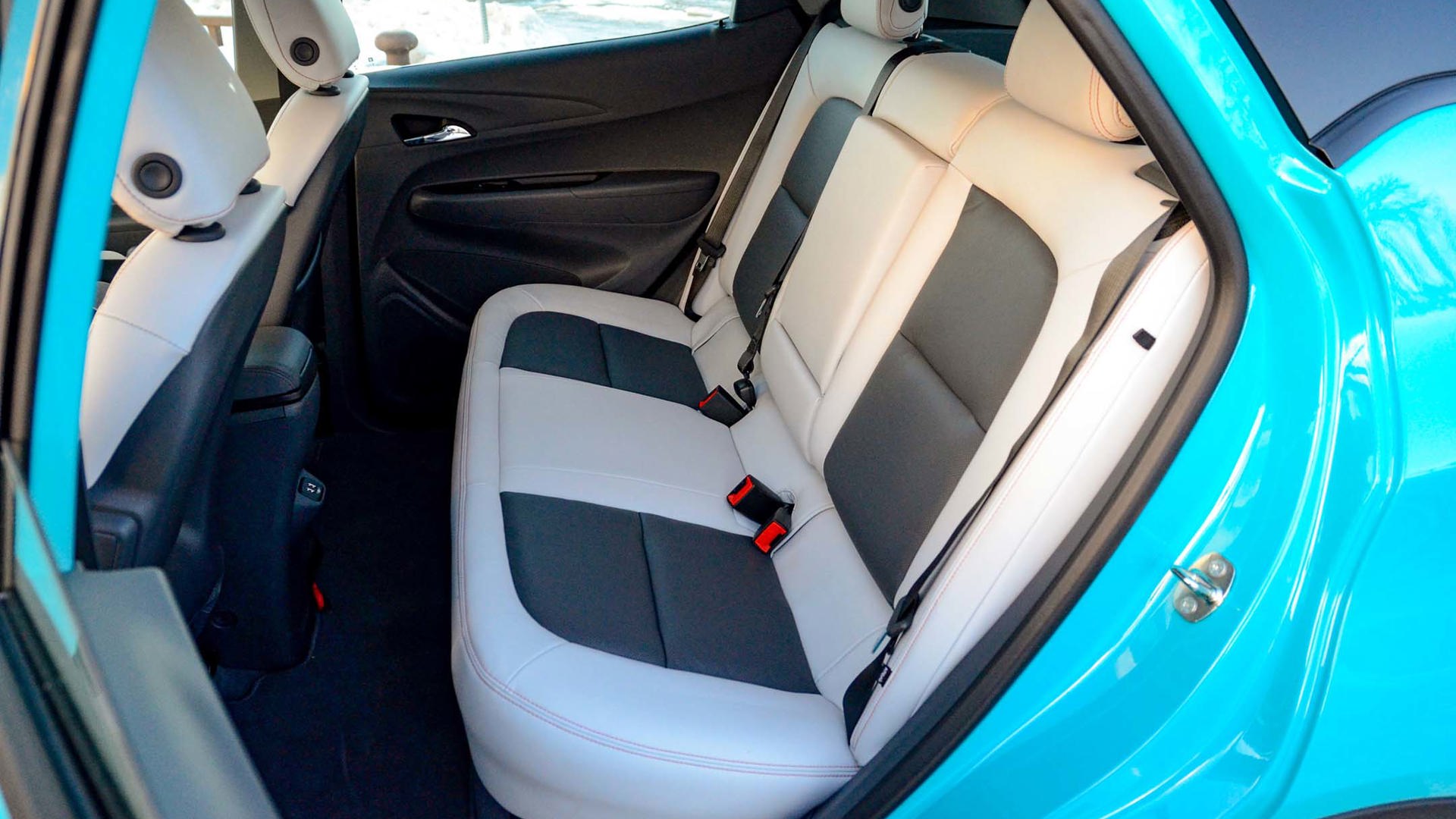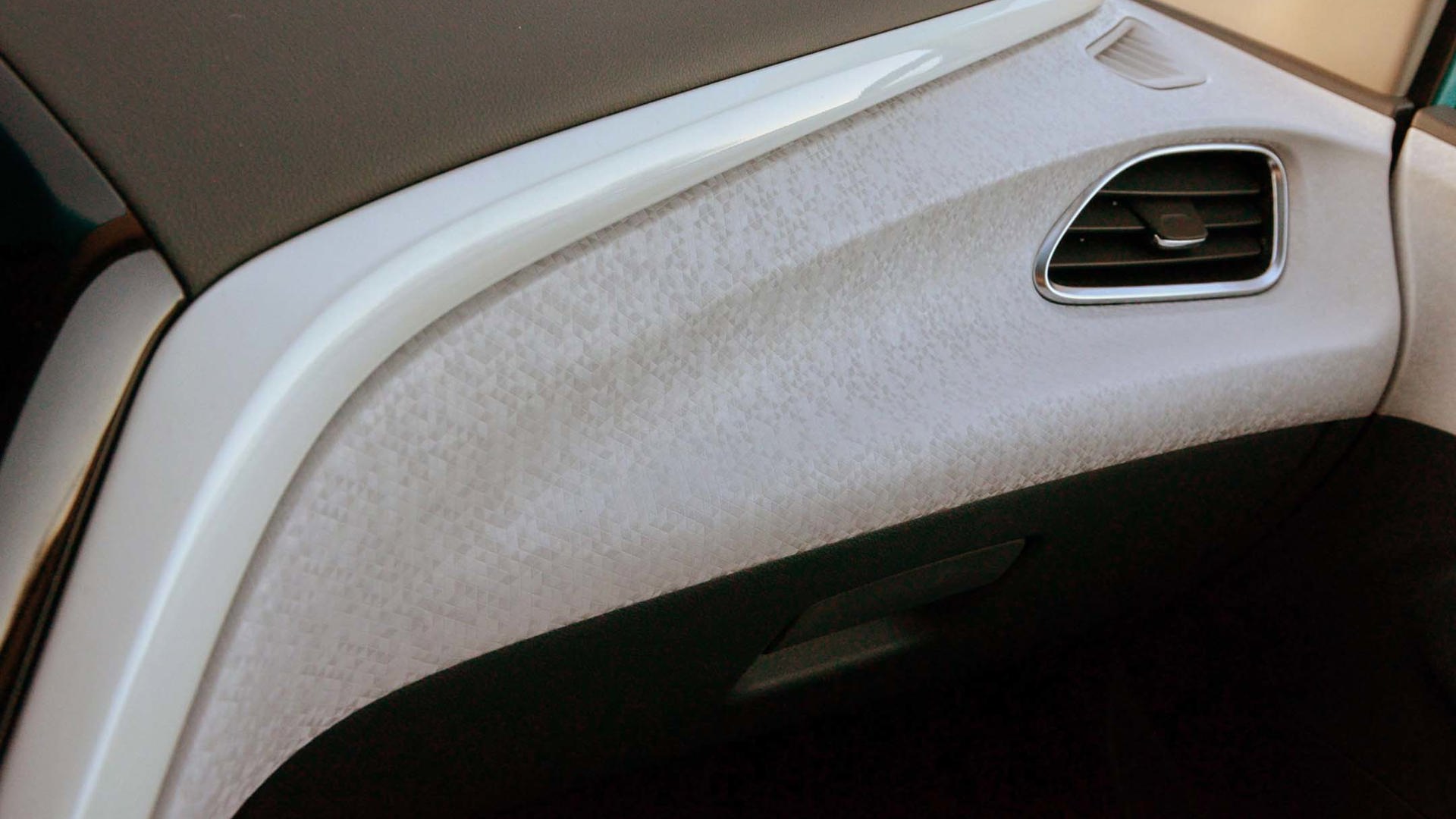Vehicle Type
Subcompact EV hatchback
History/Description
Since it went on sale in 2016, Chevrolet has sold about 13,000 copies of its all-electric Bolt in Canada.
Its one-pedal driving experience maximizes range by allowing drivers to call for maximum regenerative braking with the flick of a steering wheel-mounted paddle. This function allows drivers to operate the Bolt more efficiently while reducing wear on its brakes.
Recharging at home via a standard outlet is sufficient to add about four kilometres of range for every hour it’s plugged in, resulting in nearly 100 km of recharging for every 24 hours. If you drive less than 50 km per day (most Canadians do), then recharging on a standard outlet is likely sufficient – however, both battery life and charging speed are affected by winter temperatures, so Level 2 charging may be necessary if you regularly park your car outside in the winter.
Faster at-home Level 2 charging bumps power delivery, speeding up recharging by about 10 times. On a Level 2 charger, you’ll add about 40 km per hour to the Bolt’s battery, which is sufficient for a total recharge overnight.
Feature content includes 17-inch alloy wheels, built-in Wi-Fi, an eight-inch touch display, automatic climate control, a surround-view parking camera system, blind-spot monitoring, and more. All models are five-door hatchbacks with front-wheel drive. Maxed out, the Bolt’s interior offers more than 1,600 L of cargo space.
Powertrain
The Bolt’s 60-kWh battery pack is self-optimized by a thermal conditioning system, and backed by an eight-year/160,000-km warranty. Look for 200 hp and 266 lb-ft of torque, and a range of about 383 km at optimal temperatures.
What Owners Like
Most owners love the Bolt because of the convenience of never having to stop for fuel. When used for commuting, simply plug in at work and again at home and it negates the need to stop for charging.
The Bolt’s range is generous compared to numerous competitors, and owners tend to appreciate the easy entry and exit it provides, the flexible cargo area, and the easy drive experience, with plenty of smooth, quiet torque backed by solid handling.
What Owners Dislike
Owner gripes tend to centre around seat comfort, a somewhat clumsy gear selector, some niggling placement decisions regarding switches and controls, and a wish for higher-quality trimmings throughout parts of the interior.
First Things First
Like most used vehicles, the Chevrolet Bolt is affected by numerous safety recalls. When a vehicle is involved in a recall, dealers perform corrective work to fix latent safety defects free of charge. You may need to make an appointment to have recall work performed after checking online (or with a dealer service advisor) to see if the specific vehicle you’re considering has any recall work outstanding.
Some Chevrolet Bolt models were subject to multiple recalls, while others were subject to none. To find out if the specific vehicle you’re considering needs any recall work, talk to a dealer service advisor.
Note that a significant number of Bolt models sold in Canada for model years 2017 through 2019 were subject to a well-documented recall that dealt with a fire risk. On certain vehicles, Transport Canada says the high-voltage battery could overheat when charged beyond 90 per cent, resulting in smoke, battery damage, and possibly, a fire.
This recall has seen Chevrolet dealers diagnosing and replacing battery packs, reprogramming battery monitoring software, and recommending that owners park affected vehicles outdoors. The recall also recommends avoiding leaving the Bolt plugged in overnight, even after recall work is completed.
Apparently, two fires have since resulted in vehicles that have had the recall work performed. Note that a revised battery pack addressed this issue – and added more range – for 2020. If it’s in your budget, a 2020 or newer Bolt is best.
Next, Start Here
If you’re buying a used Chevrolet Bolt that’s been regularly dealer serviced, you’re off to a good start. Many used models for sale as of this writing are still covered by generous portions of remaining warranty.
Be sure to understand the warranty coverage remaining on the used Bolt you’re considering before you buy. You’ll want to learn both what’s covered by the warranty, what isn’t, and how to maintain that warranty in good standing by properly caring for your vehicle. Here’s some more information on warranty coverage from General Motors (GM) Canada.
Save Money With This Assumption
Due to numerous owner reports of head units that freeze, crash, lag, or fail, test-driving shoppers should approach a used Bolt assuming its touchscreen interface is in need of repair or replacement until they have proof to the contrary.
Here’s a lengthy discussion within a popular owner’s forum where numerous members complain of glitchy or non-functional screens and controls, sometimes very early during ownership. On your test drive, confirm proper operation of all functions, including navigation, built-in Wi-Fi, satellite radio, the back-up camera, and all on-screen functions, displays, and menus.
If the head unit exhibits any signs of trouble, a hard reset (hold the physical “home” and “fast forward” buttons for 10 seconds) sometimes fixes the issue. Owners also suggest having your dealer reference Technical Service Bulletin (TSB) #TSB-17-NA-071, which may provide a fix by reprogramming the unit’s control software.
Braking System Rust
Because of how they work and how they’re used, the brakes in an electric car may be at elevated risk of excessive rust and corrosion build-up. Though parts of the Chevrolet Bolt’s braking system are treated with an anti-corrosion process, braking system rust is still possible as the vehicle ages, and (especially) if it’s driven on roads where salt is used in the wintertime. To save money and prevent headaches, always be aware of the condition of the braking system in an EV before you buy, and seek professional help if it’s required.
Tires and Alignment
Paying extra attention to the tires on the used Bolt you’re considering is a great idea before you buy. Some owners have reported less-than-stellar durability from the factory-installed tires; many have not. The Bolt’s high torque output makes wheelspin easy for drivers with even a little lead in their boots, which can contribute to early tire wear.
Some owners forget to have their alignment checked and adjusted regularly, which can dramatically shorten the lifespan of a set of tires, too. On your test drive, inspect tires for general condition and tread depth, and be on the lookout for any signs of a bad alignment, like a vehicle that pulls to one side, or feels more difficult to turn in one direction than the other. Seek professional help if needed.
Safety Ratings
IIHS: ratings here
NHTSA: 5/5 stars





































